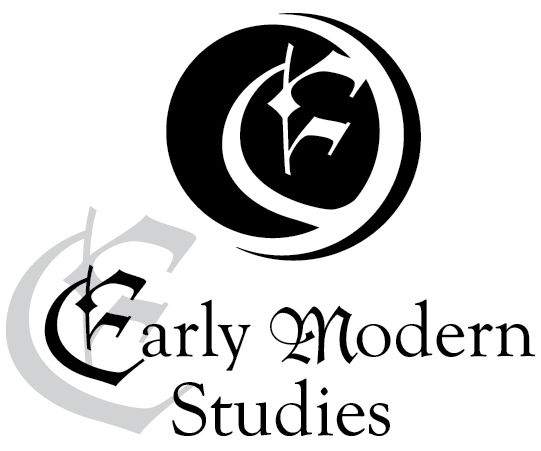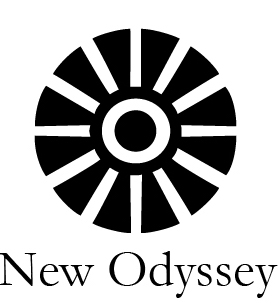by Jeff Denight
Jason Haxton writes in his journal daily, and has for the last twenty-two years, yet he has never considered himself a writer. Even now, after the publication of his book, The Dibbuk Box, a wild and fantastic telling of his real-life experiences with a haunted Jewish wine cabinet, Haxton doesn’t regularly think of himself as an author. This may seem strange that someone who is a member of the Author’s Guild and has a major motion picture based on his book wouldn’t consider himself an author. Yet, Haxton’s experiences with writing are collaborative, and he attributes his success to not only himself, but to everyone who helped him along the way.
When Haxton first had the idea for his book, he had no intention of writing it himself. He felt that if he provided the story and the material, then someone else might do a better job. After contracting with Truman State University Press to publish his story, Haxton originally took his idea to a writer recommended by the Press. But when this author began experiencing the strange effects of the box, he backed out.
Next, Haxton took his idea to Giles Fowler, author of Deaths on Pleasant Street, published by TSUP. Though Fowler was excited about the new project, he was unwilling to write it for Haxton.
“Giles agreed to edit my book,” Haxton said. “I wouldn’t have considered myself a writer then—I just have these journals—so when I sent in my first fifteen pages, I got three of them back. They were just bleeding with red ink.”
It was clear to both Fowler and Haxton that their system could be a bit more efficient. Haxton began sending a few pages at a time to Fowler, and this began a constant flow of new pages to Fowler, edits back to Haxton, revisions back to Fowler; each writer working in collaboration to craft a better book. Fowler was so dedicated to the book that he continued to edit it until they finished, which ended up being a few months later than he agreed to.
“The writing process took about nine months,” Haxton said. “Though Giles originally agreed to help for seven, he stayed on the project until we were finished.”
Haxton said he’s glad that he decided to work with Fowler in the way he did, instead of continuing his search for an author for his book. For the book, Haxton kept it true to life, and he said if someone else were to have written it, “It would have still been my story, but it wouldn’t have been my story. It would have become their interpretation of the story.”
With Fowler’s help, Haxton was able to keep a personal connection attached to the book, the reason he believes the book has been such a success. “They’re all true events. I can go back to any one of those days and look up what happened, because they’re all in my journal. I guess the pure honesty of my thoughts, what I experienced and what I was feeling came from my nightly journal entries—never knowing what the next day would bring with this item—truly comes through in the story. I guess that is why people like it—it is honest and occurring as you read it. Writing the book from my journals allowed me to keep from spoiling the mystery.”
The Dibbuk Box doesn’t rely solely on his own journals or experiences; it is riddled with stories and testimonies from previous owners, various folk who encountered the box, and a few anonymous persons whose only contact with the box was through a photo of it. Furthermore, people who play a role in Haxton’s Dibbuk Box story seemed naturally drawn to help Haxton in his efforts to understand and cleanse the box of its demonic evil. Even before the book was written, the story of the Dibbuk Box had a way of bringing people to work together, and that didn’t stop with just helpful strangers on the Internet.
In October 2004, a lawyer representing Sam Raimi, director and producer of such films as the Spiderman trilogy, approached Haxton. Raimi heard about Haxton and the Dibbuk Box through a Los Angeles Times article, as well as through Haxton’s own website. Raimi wanted rights to make a filmed version.
Though Haxton didn’t mind the idea of the story being retold, he said, “I originally told them ‘No.’ It didn’t matter to me who he was. I didn’t care. I was just starting my book, my kids were still young, and, most importantly, I was happy. I didn’t want anything to get in the way of that.”
But eventually a contract was drawn up that allowed Haxton to keep rights to a book, documentaries, replica boxes and a few other elements. A movie based on the box, The Possession, will be released August 31.
Just like with Haxton’s book, there was no shortage of people working on the film’s script. Haxton said there have been three scripts drafted for the film. Stephen Susco (The Grudge, The Grudge 2) penned the first of the scripts; his was loosely based on Haxton’s personal experiences, with the protagonist being a museum director who has recently taken possession of a haunted Jewish box.
Susco’s script was polished and finished, but then bad news came. While at a party, Susco ran into his friend and fellow screenwriter, E. L. Katz (Autopsy), who was elated about a new job that he had just received. The job? Katz signed on to write the script for a dibbuk box movie; the very movie that Susco had just finished writing. Katz’s script told the story of a college student who bought the box from an auction on the Internet; a close similarity to the owner previous to Haxton.
Once Katz’s script was completed, he received bad news as well; his script had been passed over, and this time Juliet Snowden (Knowing, Boogeyman) was to write the coveted screenplay. This version of the script is the final version, with the story vaguely following Kevin Mannis’ story, the original owner of the box.
Haxton hypothesizes that these first two drafts of the script aren’t just going to be thrown away. “It’s not like they were bad scripts. They were good. They just weren’t where the story begins.”
Haxton’s guess is that Raimi had the full story written in a backwards order, starting with Haxton’s experiences and leading all the way back to Mannis’. This way, Raimi could produce sequels to The Possession quickly, without sacrificing story quality.
“Raimi is a master of horror. He took control of the American horror genre with The Evil Dead trilogy; Japanese horror with The Grudge,” Haxton said, “and there’s no way he’s going to give up on Jewish horror.”
Many of those who worked on the film wanted to keep close to Haxton’s story, often asking him for advice or to draw inspiration from his stories. Though Haxton has written to all of the screenwriters, he still has regular contact with Susco. “Susco has kept up a friendship,” he said. “Mostly by his contacting me about the movie, my book, articles in magazines. And he has expressed a desire to do more work, if possible.”
Haxton’s contribution to the films didn’t stop there. In order to draw inspiration for the box, Raimi’s assistant asked Haxton to acquire an exact replica of the box.
“They were too afraid of having the actual box,” Haxton said. “Nobody wanted to house it.”
The box in the film, while not the exact replica, does draw upon the wine cabinet’s unique hinges, its odd appliques and Jewish inscriptions. When I asked why they decided to go with a chest instead of the replica, Haxton responded, “It was for practical purposes. [Natasha Calis, who plays the box’s first buyer in the film] needed to be able to carry it, but the replica was too large.”
Because the filmmakers worked so closely with Haxton throughout the process, taking his experience for inspiration, Haxton thinks the film complements his book, rather than detracting from it.
“I believe from what I have seen so far,” Haxton said. “That the movie truly complements the suspense I tried to keep in the book of not being too sure what might come next, and also that element of help coming when it is unexpected from unexpected sources.”
It seems that in the past few years, everyone wants to have a hand in telling the tale of the Dibbuk Box. Beside the book and the movie, there are several other groups telling the tale of this demonic box. One of which is SyFy Channel’s popular docudrama series, Paranormal Witness, which will air an episode on August 29 titled “Dybbuk Box” about Haxton’s story. Haxton said they were very excited to work on that episode, and that it could be one of the most-watched episodes of the season.
“SyFy really wanted this story because it was already vetted. With most ghost stories, you get people who have no real proof other than their statement. ‘Oh! I saw a ghost!’” (At which point in the interview, I admit, I thought Haxton had actually seen a ghost in our meeting room. But then he continued.) “They have to do research into these stories to make sure it’s true. Mine was already vetted. I have eight years of journals, a published book, and lots of contactable references. Their work is already done for them.”
Besides The Possession and the SyFy program, the story of the Dibbuk Box continues to be told again and again. Haxton spoke about the box and his book on multiple podcasts, an episode of The History Channel’s Fear Files based on his story, and in a six-page spread in Entertainment Weekly on August 3. It seems that this story has a natural draw to people that sparks their imagination, and they want to be a part of it. Haxton think this is because “People have always loved stories like this. We have Bigfoot, the Loch Ness Monster… what else? Chupacabra, that’s the newest one. But it’s really been a while since we’ve had a true story create a legend like this.”
In order to tell this intriguing story completely, Haxton understood the need to include as many voices as possible. Haxton said that he couldn’t have told his story without the participation and help from all who have been involved; that it’s great when “everybody comes together, when you help each other. Collaboration is the only way to get a great finished product. If you’re nice to people, and give what you can (especially if it doesn’t cost you anything), then you’ll only foster good relationships.”
With all the excitement stirring around the story of the wine cabinet, could there be repercussions with tempting the haunted box? The film crew has already felt the effects of the Dibbuk Box. Haxton said that a few days after The Possession finished filming, their entire props warehouse spontaneously burned to the ground. If the dibbuk did actually cause this incident, what will happen when this film is released to the wider audience? In The Dibbuk Box, the box affected people after they saw only a picture of it. This is a major motion picture telling the story for entertainment; could the malicious effects be intensified?
I asked Haxton what he thought about this possibility. He said, “I believe people will feel a connection and have issues—they always do—but so far nobody has died, just felt horrible bad luck. So, I am not too worried.”
Then he joked, “Then again, there is that Mayan ‘December 2012: End of the World’ scenario—maybe it can give that ball a kick start.”








